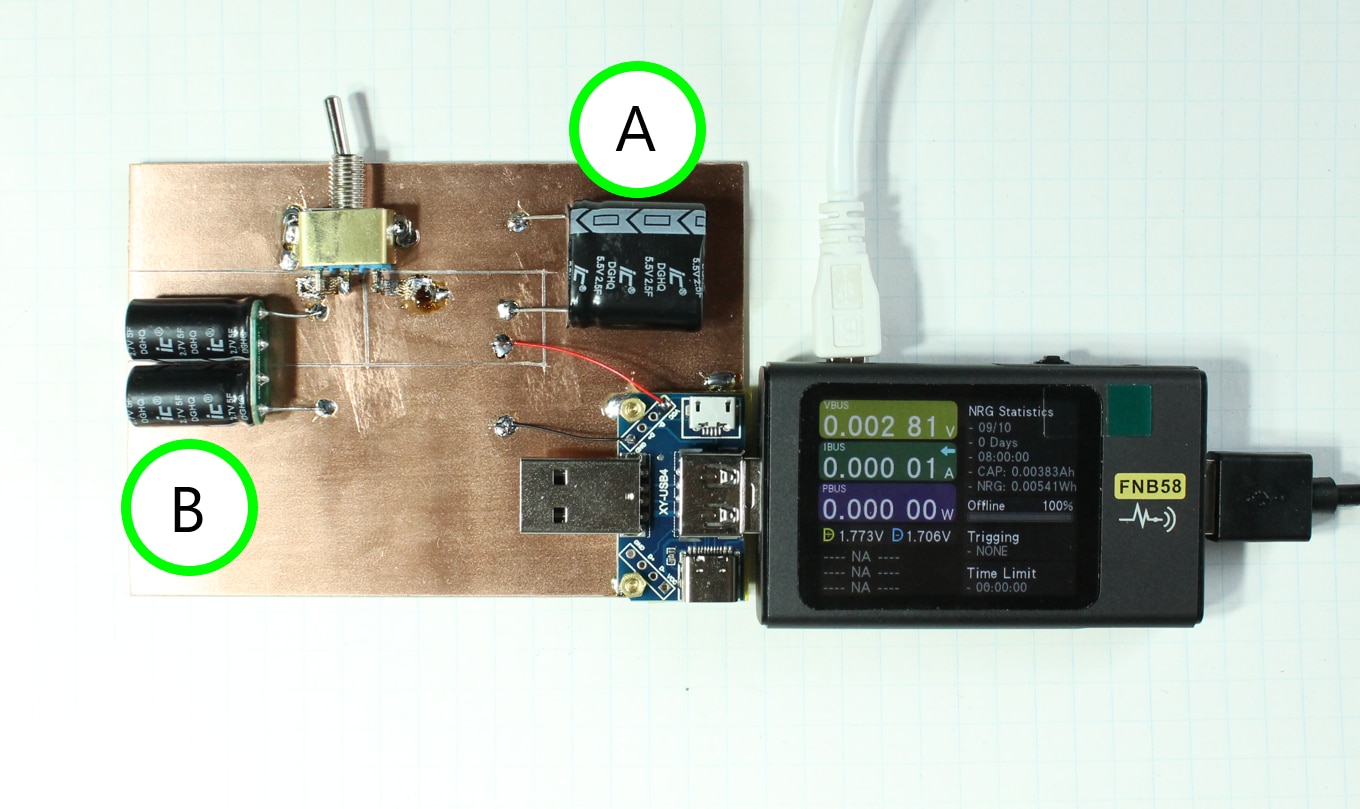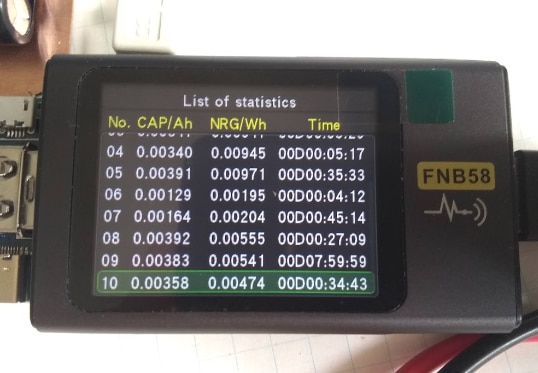The following phenomenon is even more mysterious than KFC’s secret recipe or where do socks go.
When you connect a charged capacitor in parallel to a discharged capacitor of the same capacitance half the stored energy disappears!

See a full detailed analysis at: en.wikipedia.org/.../Two_capacitor_paradox
I will attempt to demonstrate this behavior using supercaps and some primitive instrumentation.
- 2x EDLC SuperCapacitor 2.5F 5.5V
- Adjustable power supply
- USB power meter
- 50 Ohm resistor
Here is the test apparatus:

The 2 DUT capacitors share a common ground and a toggle switch allows for the positive terminals be isolated or shorted together.
I first measured the charge and energy stored in DUT-A by charging the capacitor to 5 V and then recording the effective output charge and energy when a 50 ohm resistor is used as a test load. I repeated the test a few time to get a vague ideal how repeatable the test setup was. Here is a screenshot of the recorded test runs on my USB power meter.

After a few minutes of data entry into excel here are all the test run results.

How long the capacitor was charged likely and allow to soak at its test voltage likely lead to some variability in the test. At first I had my power meter stop recorded when the discharge current declined below 10 mA. Later on, I manually terminated the test when the DUT registered less than 1 mA of discharge current into the test load.
Finally the big moment! I charged DUT-A to 5 V and discharged DUT-B to 0 V. Then looking the other direction flipped the toggle switch which placed the 2 DUT capacitors in parallel with a low ohm connection.
No noise, no smoke, no excitement, no welded switch contacts… Somewhat anti-climatic.
I measured the voltage across the now parallel capacitors at 2.881 V. Assuming both capacitors were equal and ideal, the voltage should have declined to 2.5 V (half of the 5 V test stimulus). Capacitor DUT-B likely has a lower effective capacitance compared to that of DUT-A. Testing a second time resulted in final voltage of 2.848 V.
Was the charge of DUT-A conserved? Yes, the measured charge was within the margin of uncertainty of the test setup.
Where’s the energy? The recorded energy of the parallel DUT capacitors is 56% that of the energy that was originally stored in DUT-A prior to being connected to discharged DUT-B.
Where did the energy go!?
Repeating the experiment in the opposite direction, charging DUT-B and connected discharged DUT-A resulted in a final voltage of 2.658 V.
There is lots that could be improved and the voltage coefficient of capacitance of my EDLCs also played role in leaving a little extra energy in the system.
But, I would say its an easy DIY experiment if you want to have some SuperFun.

